Integrating historical records to compare historical and contemporary coregonine habitat use in the great lakes
Contributing Authors
Cory Brant (USGS, cbrant@usgs.gov), Karen Alofs (University of Michigan), Katelyn King (University of Michigan)
Project Description
Understanding and comparing historic and contemporary habitat use and distributions of coregonines (Gap Analysis, Box 2) has been deemed essential to inform all boxes of the Great Lakes coregonine restoration framework; there are dependencies between planning boxes and planning supports restoration decisions. Here we are requesting support to implement the Box 2 (Gap Analysis) methodology which is currently in development.. The Gap Analysis Science team is now fully formed. The team, co-led by Alofs and Brant, consists of scientists representing Sault Ste Marie Tribe of Chippewa Indians, Chippewas of Nawash, Ministry of Northern Development, Mines, Natural Resources and Forestry, Michigan DNR, The Nature Conservancy, Fisheries and Oceans Canada, U.S. Fish and Wildlife Service, University of Michigan, U.S. Geological Survey, and National Oceanic and Atmospheric Administration. We anticipate having the methodology for Box 2 drafted, reviewed, and approved by Joint Strategic Plan committees around Jan. 2022. We also anticipate the methodology to incorporate three main tasks which are guided by the approved Restoration Framework: Collect and database coregonine distribution/habitat sources (objectives related to this task are currently underway through a current GLRI grant, work which could leverage the work proposed here), Model and map distribution and habitat, and a gap analysis designed to compare historic and contemporary distributions.
